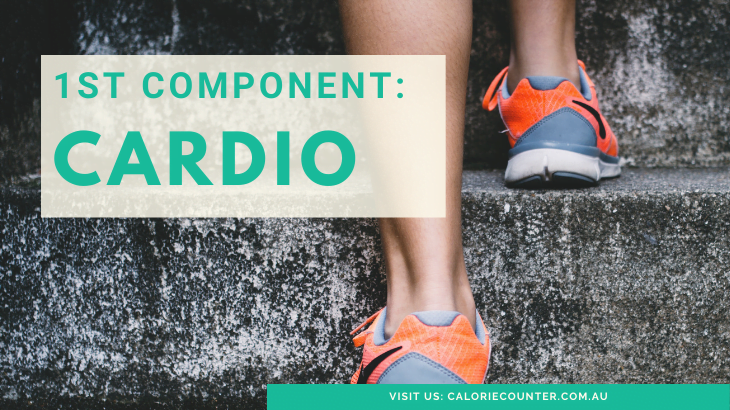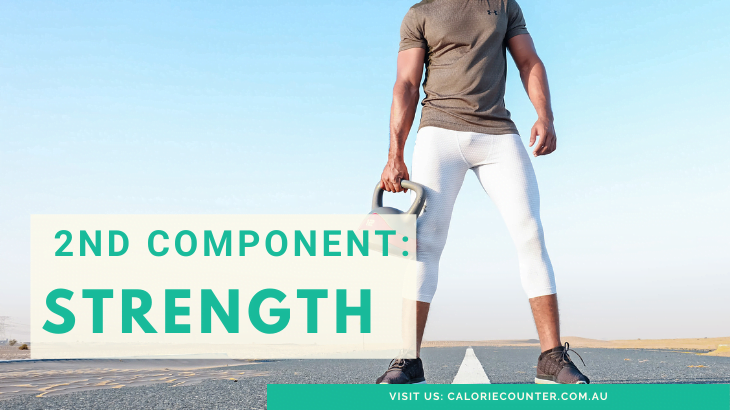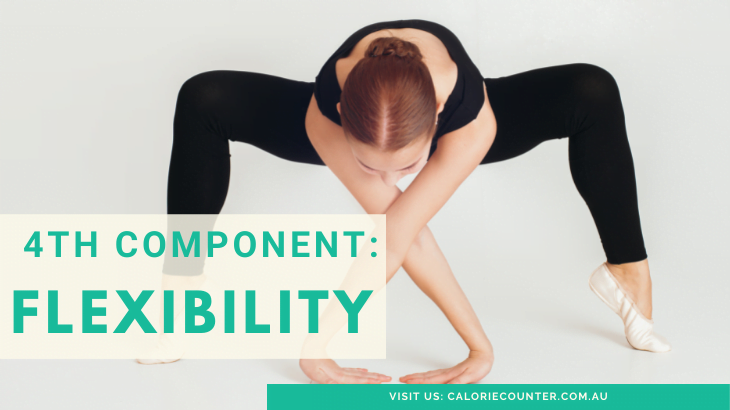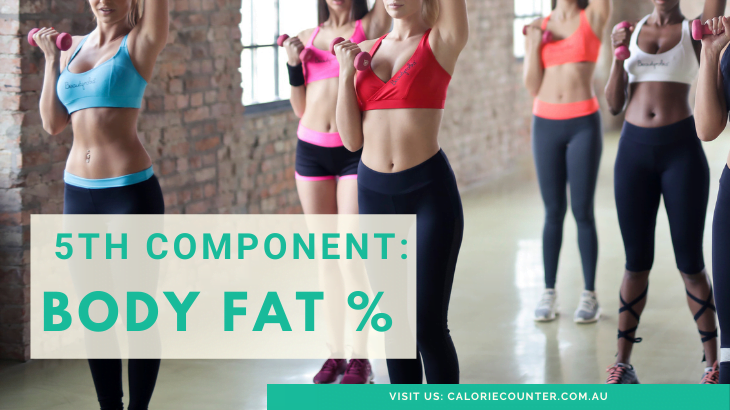Use the 5 Components of Fitness to test your level of fitness. Calorie is King, but it is still important to aim for fitness as well as a healthy body weight. The 5 Components of Physical Fitness are:
- Cardiorespiratory (or Cardiovascular) Endurance
- Muscular Strength
- Muscular Endurance
- Flexibility
- Body Composition
According to organisations like the US Department of Health, you can declare yourself fit if able to pass all 5 fitness component tests. Here’s how to use each component to discover your fitness level:

Heart and Lung Endurance Component
More officially known as Cardiorespiratory Endurance, this component of fitness is about how well you can do high intensity exercise. Its the type of activity which causes you to breathe a lot and get hot under the skin. Your heart pumps furiously and your lungs fill and empty quickly. We’re talking about running, pedaling a bike up a hill, doing an aerobics class, and other such vigorous intensity exercise.
Fit adults can exercise with vigorous intensity for ten minutes per day, or 75 minutes per week.
A more specific test of the cardiorespiratory, or cardiovascular, endurance component of fitness is the Step Test. First, step onto a raised platform such as a stair. Then, place both feet on the higher surface. Finally, step back down without turning your body. Alternate feet and repeat the process as fast as you can, non-stop. Last 5 minutes to declare yourself fit!
From age 65, you are fit if you can exercise at moderate intensity for 150 minutes or more per week. This means brisk walking, leisurely bike rides, or gentle calisthenics. Basically, anything that gets the heart pumping fast enough to cause breaths to get faster.

Muscle Strength Component
The second component of fitness is about how strong your muscles are. Muscular strength is not about how long or how fast you can go. Instead, it is about how much weight you can lift, push, or pull. We have several different muscle groups, and there are many different types of strength exercises. The exercises which work multiple muscle groups at the same time are best for strength training.
Perhaps the most convenient and universally available muscle strength exercise is the push-up. This is where you lie face-down on the ground with your hands placed palm-flat alongside your shoulders. Raise your body up by straightening your arms, whilst keeping your back and knees rigidly straight. Without pausing, return to the start position by bending the elbows and repeat the straightening and bending movement until failure.
If you are an adult male aged 18 to 65, call yourself fit if you can do at least 20 push ups in one go.
If you are a female in the same age group, call yourself fit if you can do 15 push ups.
Older adults aged 65 and above are not usually tested with the push up method. Instead, various grip-strength and weight-lifting techniques are used.

Muscular Endurance Component
The third component of fitness is Muscle Endurance, or how long your muscles can strain for. How far you can walk or run. How long you can hold your shopping bag in one hand. The laps can backstroke in the pool. Like the muscle strength measure, this muscular endurance component can be a challenge to define.
A good place to start is the exercise known as the plank.
Do a plank by resting on your elbows (90 degree angle between arm and floor) and the balls of your feet whilst keeping your legs and back as straight as possible.
Imagine that, from the top of your head to your heels, your body has become a straight plank of unbending timber.
Adult males are considered fit if their muscles can endure a plank for 30 seconds at a time. Females are fit if they can plank for 15 seconds per go.
Both men and women are considered strong when able to plank for 60 seconds or more. The world record plank is over 5 hours!

Flexibility Fitness Component
Number 4 out of the 5 Components of Fitness is Flexibility. Flexibility is the ability for your limbs and torso to be able to bend through a wide range of motion at the joints. Flexible joints are those not held back by stiff muscles and connective tissue, poor cartilage and joint fluid, and pain.
There are several important tests for flexibility, based on age, gender and medical history. However, one simple, age-old method arguably trumps them all: the toe-touch.
To perform the toe-touch, stand up straight, feet together, then gently bend your back whilst keeping your knees unbent, reach down and touch your toes with your fingertips. Alternatively, stand with your feet apart and touch the floor in-between them.
Adults aged 65 and under are classed as being fit if they can touch their toes without bending their knees. Older adults use more specialised range of motion tests to assess their flexibility as a component of overall fitness.

Body Composition
The fifth, final, and most visibly obvious Component of Fitness is Body Composition. Simply and crudely put, it is the amount of fat you have, relative to muscle, bone and other body tissues. Body composition is not the same as body weight, since a fit, muscular person may weigh the same as an unfit person of the same height.
An adult male is considered fit if he has less than 17% body fat, whilst an adult female is fit with less than 24% body fat.
In other words, men are fit if they carry less than one fifth of their body weight as fat, whereas fit women may have up to about one quarter of their weight as fat.
Measuring body fat percentage accurately without specialised hydrostatic testing equipment is difficult. However, several more convenient, if less accurate, methods such as skin-fold (with callipers), bioelectrical impedance, abdomen vs neck ratios, and dual energy x-ray absorptiometry tests can be used.
For most people, body composition can easily be measured with a simple BMI reading. Find out what your BMI is and learn all about it with the calcount BMI Calculator right now!
5 Components of Fitness Activities
To summarise, the activities related to each of the five components of fitness are:
- Cardiorespiratory Endurance Component: The 5 Minute Step Test
- Muscular Strength Component: 20 push-ups for men, 15 push-ups for women
- Muscular Endurance Component: 30 second plank for men, 15 second plank for women
- Flexibility Component: Touch your toes!
- Body Composition Component: Less that 17% body fat for men, less than 24% body fat for women
Whilst broadly accepted, understand that different health professionals are likely to have more specific activities and definitions for individual people.









